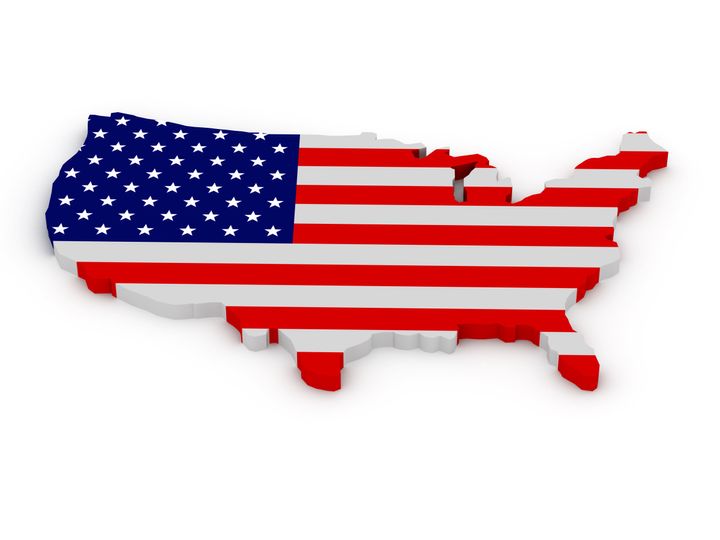
The following analysis is adapted from analyses in FairVote's Monopoly Politics 2012 report. You can read our southern analysis with graphs and charts here.
Facts in the Spotlight:
•Partisan Representation in the South
oPercentage of U.S. House seats held by each party in 1991 in the South (14 states , including border states of Texas, Oklahoma, Arkansas, Kentucky, West Virginia and Virginia): 67 percent Democratic to 33 percent Republican.
oPercentage of House seats for each party in those states today:
72 percent Republican to 28 percent Democratic
•Race and Party
oNumber of white U.S. House Democrats from the South in 1991:
81 Democrats (with four African Americans and four Latinos)
oNumber of white U.S. House Democrats from the South today:
22 Democrats (with 17 African Americans and four Latinos)
•Electoral Competition in 2012 in the South and the rest of the United States
oNumber of districts with a partisanship that has a clear Republican lean
(>54 percent Republican): 110 districts
oNumber of districts with a clear Democratic partisanship lean (>54 percent Democratic):
34 districts
oNumber of districts with a balanced partisanship (between 54 percent Democratic and
percent Republican): 8 districts
oPercentage of districts with this definition of balanced partisanship. In The South: 5.3 percent (8 seats out of 152). Outside the South: 23.3 percent, 66 seats out of 283
•State legislative representation in the South
oPartisan balance of state legislatures in the region in 1991: 28 Democratic, 0 Republican
oPartisan balance of state legislatures in the region today : 5 Democratic, 23 Republican
There are many ways to measure how winner-take-all elections have hurt American democracy in this era of increasingly rigid partisan voting patterns in federal races. As the United States is one of the few multi-racial democracies in the world, the interplay of race, elections and representation is particularly important. Perhaps the most striking example of this interplay is the political transformation that has taken place in the South over the past 25 years, and the impact of that partisan shift on the integration of African-American voters into our politics.
African Americans have always been heavily concentrated in Southern states, where slavery was the law of the land until after the Civil War. Today, most African Americans continue to live in states that were part of the Confederacy during the Civil War. Given their general preference for the Democratic Party, that makes the South's dramatic change in its partisan representation since 1990 all the more noteworthy -- as with it has come a drastic change in the political power available to African Americans.
Winner-take-all elections have contributed to a polarizing, "us vs. them" form of representation that has led to most Southern U.S. House members being either relatively liberal African-American Democrats or relatively conservative white Republicans. The "Dixiecrat," the white, right-of-center Democrat, has been nearly wiped out of the U.S. House -- along with more centrist Republicans.
Our definition of the South for the purposes of this analysis is the border states of Texas, Oklahoma, Arkansas, Kentucky, West Virginia and Virginia, along with all the states to their South: Tennessee, Louisiana, Mississippi, Alabama, Georgia, Florida, South Carolina and North Carolina. These 14 states have changed from having 67 percent of their U.S House seats held by Democrats in 1991 to having 72 percent of their House seats held by Republicans in 2011 -- a Republican share of seats that is projected to increase in the 2012 election.
This partisan shift represents an enormous transfer of congressional seats between the major parties. Assuming the eight balanced seats in the region split evenly in 2012 and each party dominates its strongholds this decade, the change will be fully 121 seats -- from Democrats having 45 more seats in 1991 to Republicans having 76 more seats after the dust settles from redistricting in upcoming elections. That growth of 60 Republican seats represents more than a quarter of the Republican Party's current seats total in the House of Representatives. After the 2012 elections, it's quite possible that more than half of all Republicans in the U.S. House of Representatives will have been elected from these 14 Southern states.
There are three major reasons for this dramatic partisan shift: changes in the partisan voting patterns of Southern voters, a decreasing percentage of Southern voters who split tickets between how they vote for president and how they vote for Congress, and winner-take-all elections that over-represent those in the majority. The number of congressional districts that are heavily African American -- and thus having the impact of a classic partisan gerrymander based on "packing" voters of one party into a district in order to have an edge in surrounding districts -- has also been a contributing factor.
The interplay between race and party has been central to this narrative. As more African-American voters were given opportunities to elect candidates of their choice, the Democratic Party in the South seemed to become less successful in distinguishing itself from national Democrats. As Democratic presidents Bill Clinton and Barack Obama and Republican congressional leaders from the South came to define their respective national parties, more Southern white voters migrated into the Republican Party -- finishing a trend that had begun with white southern votes for Republican candidates in the 1968, 1972 and 1980 presidential races.
The shift of some white Southern voters from backing conservative and moderate white Democrats to consistently backing conservative Republican congressional candidates, combined with winner-take-all voting patterns and redistricting in 2001 and 2011, has created a stagnant political environment in the South. Going into this November, only eight districts (barely 5 percent) in the entire region are considered balanced -- that is, having a partisanship difference between the major parties of less than 8 percent. In the rest of the country, nearly one in four congressional districts is balanced.
The future of Southern politics in the next decade -- and probably far longer -- looks clear: it will become increasingly and more firmly Republican in state elections and harden its current patterns of congressional representation. At the state level, these 14 states in 1991 had 28 legislative chambers that were all run by state Democrats. Today, only five state legislative chambers remain Democratic, all in Border States: both chambers in Arkansas and West Virginia and the house in Kentucky. Most of these states also now have Republican governors. At the congressional level, the lack of competitive districts and the declining ability of center-right Democrats to win in Republican-leaning districts make any significant shift in congressional representation unlikely as well.
This does not mean that Democrats won't ever win elections in the South. Barack Obama carried the presidential vote in three of these states in 2008. Voters may tire of the majority party in governor's races and occasionally elect Democrats. But state legislators and Members of Congress are nearly certain to be heavily Republican.
FairVote's alternative redistricting plans with fair voting underscore what a difference even a modest change in winner-take-all voting rules can make. Using fair voting plans in these southern states (non-winner-take-all voting methods in larger districts that elect between three and five seats), every single voter would almost certainly end up with at least one representative from each major party. In every district, its political left, right and center would be represented -- far more accurately reflecting the nuances of Southern voters than today's simplistic and polarizing division between largely liberal African-American Democrats and conservative white Republicans.
